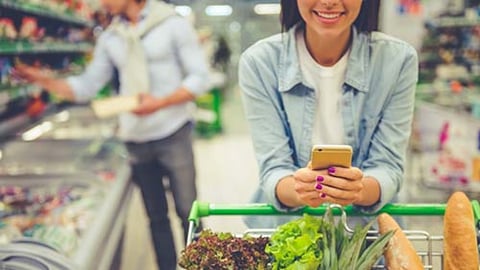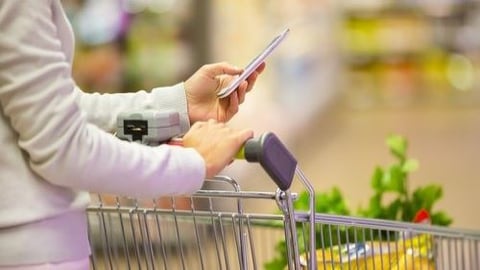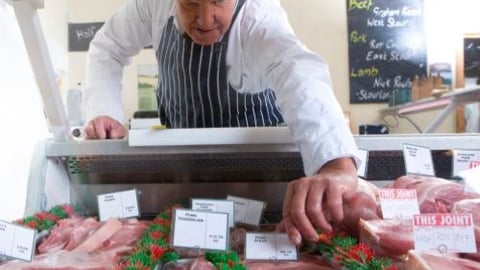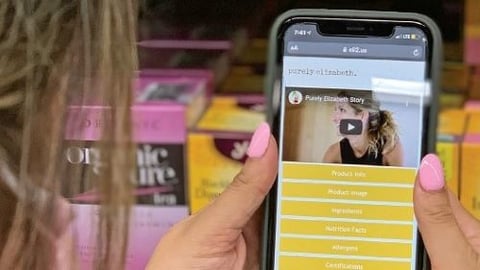The QR Code Opportunity in Grocery
The point of sale arguably has never been more pivotal, as shoppers are faced with an ever-growing array of purchase options. One technology that has been particularly effective in the foodservice industry since the pandemic – the QR code – can be better leveraged at retail to provide shoppers with more information and incentives, according to one digital promotion provider.
Henri Lellouche, VP of retail and partnerships for Salt Lake City, Utah-based Quotient, said that the time is right to seize this opportunity and make the shopping experience easier for the consumer – and more insightful for retailers and CPGs. “Back in 2015, you had to download an app and people didn’t know what QR codes were. With COVID and the advent of phones that easily recognize QR codes in native cameras, it’s the perfect situation and an easy thing for shoppers to do,” Lellouche told Progressive Grocer.
[Read more: "Grocers Are Streamlining Ops With IoT"]
In addition to linking consumers to information on products, brands and stores, QR codes can instantly deliver savings to consumers. “As printed coupons die, there is a real need to have something at the shelf to help capture the shopper’s attention,” Lellouche pointed out.
For its part, Quotient has teamed up with Vestcom, a provider of data-integrated media solutions, to help retailers get QR codes to the shelf in a quick and scalable way. Given the high-inflation environment and consumer concerns about a possible recession, Lellouche noted that interest in coupons is especially high. “I’m expecting an increase in promotional activity,” he said of the climate in 2023.
Although consumers across several demographics are more familiar with QR codes than they were a few years ago, grocers and brands can better engage with younger consumers with digital offers compared to printed coupons. “When you ask a group of young people, you don’t get many who say they use coupons, but if you ask them how many have a loyalty card, basically every hand gets raised. They are ready to be on-ramped,” he declared.
Lellouche underscored the opportunity in the overall space. “Only about 18% to 20% of loyalty members are digitally active with coupons. That’s a number that we as an industry need to do something about to drive adoption,” he said, adding, “That’s why I’m keen on QR codes.”
To demonstrate the potential of this digital solution, Quotient has been working on measuring usage and results. “The questions that are being asked are how many people are snapping QR codes, how many are redeeming offers and what the sales lift looks like,” he reported. Comprehensive answers, he added, will come in time, since the move from print to digital couponing through QR codes is a true behavioral change for shoppers.
For now, this form of advertising can be considered more of an investment than a cost, he noted, especially as consumers look to get more value out of their shopping journeys. “I do think that advertising has to have a call to action to be relevant. You can create an action with a QR code that is more than just information,” Lellouche remarked.
There is also value in the long term. “QR codes are data rich and much more flexible. Depending on what the advertisers wants to do, they could add recipe and wine pairing suggestions, for example,” he said. In addition, retailers can leverage geofencing to track their audiences and promote highly personalized offers and services as people shop throughout their store.
Another facet of the flexibility of QR codes is placement. The codes can be used on digital signage, tags and even in traditional circulars. “They are very forgiving,” Lellouche affirmed.






